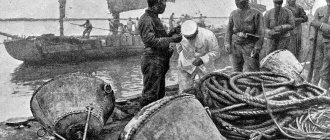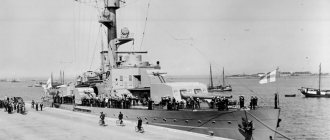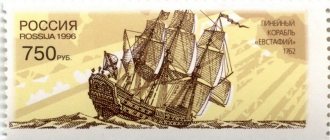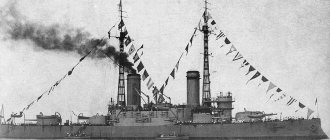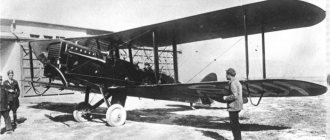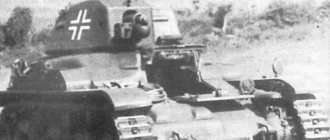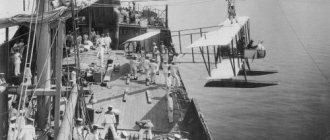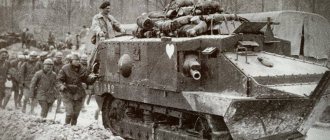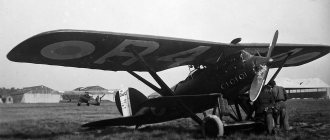Battleships storm Kinburn
On the evening of September 8 (August 27, old style) 1855, the Russian troops defending Sevastopol, by order of the commander Prince M.D. Gorchakov left the residential part of the city and retreated to the North side. All the fortifications of the South Side were blown up, and the remnants of the fleet were sunk in the bay. The Russian batteries on the North Side still held the bay under fire, so the Allied fleet could not use Sevastopol: the French continued to remain in Kamyshovaya Bay, and the British in Balaklava.
Now the Anglo-French fleet completely dominated the Black and Azov Seas, but could not have any influence on the land front. The allied command faced a logical question: what next? The British made plans for further operations in Bessarabia and the Caucasus, but believed that the first step was to capture Nikolaev, where Russia had powerful shipyards and the remnants of the fleet could take refuge. As for the French, they wanted to test their newly created armored ships - floating batteries of the Devastation type.
Kinburn and Ochakov
The entrance to the Dnieper-Bug estuary was covered from the north by the Ochakov fortress, and from the south by the Kinburn fortress, which lay on the long and narrow Kinburn Spit. Next to the spit was the main fairway, 15 feet (4.7 m) deep, narrow and winding. Russian artillery was located on the high bank, but there were only 15 guns here - the main channel lay further south, and shooting from Ochakov could not interfere with the movement of ships along it.
Entrance to the Dnieper-Bug estuary on a map of the early 19th century. ochakiv.info
The main citadel of Kinburn, built by the Turks, was located 4 km from the tip of the spit. It had the shape of a square, there were bastions in the corners, and there were earthen ramparts on the land sides. According to English reports, the fortress had 69 guns, including 6 flanking guns and 12 mortars. Most of the guns were standard 24-pounder and 18-pounder guns on wheeled carriages, mounted openly behind barbettes or earthen mounds. In addition, closer to the tip of the spit there were two separate batteries - stone and earthen, each with another 10 guns.
The garrison under the command of Major General Maxim Kokhanovich consisted of 1,484 people - 1,447 lower ranks and 37 officers. The artillery was commanded by Lieutenant Colonel Polisanov, the engineering service by Staff Captain Sederholm. In addition, it included two companies of the Odessa Regiment and the 5th reserve battalion of the Ukrainian Jaeger Regiment, which consisted mainly of old-timers and recruits.
For operations against Nikolaev and Kherson, the Allies needed to establish control over the entrance to the Dnieper-Bug estuary, and to do this, first take Kinburn. British Secretary of State for Military Affairs Fox Maule-Ramsay directly stated that the only purpose of this operation was to somehow use the power of the allied fleet and confirm its dominance over the Black Sea.
Allied command plans
On September 29, a meeting of the allied military leadership was held at the headquarters of the French commander-in-chief in Crimea, Marshal Jean-Jacques Pelissier. Present were the commander of the British forces, Lieutenant General James Simpson, British Rear Admiral Edmund Lyons and French Vice Admiral Armand-Joseph Bruhat.
Admiral Armand-Joseph Bruhat. Artist - Pierre Francois Eugene Giraud (1856). commons.wikimedia.org
The main task of the meeting was to find out the possibility of taking Kinburn, as well as to determine the forces that each side was ready to allocate for this. On October 2, Admiral Bruhat reported to the French Minister of Navy:
“The marshal begged me to give my opinion. The day before I had conferred with Admiral Lyons and was now able to speak on behalf of my colleague as well. We did not doubt success, but we believed that to achieve it quickly it was necessary to use the most powerful means. We have these funds."
The French could field 4 battleships, 3 corvettes, 4 advice notes, 5 bombardment ketches, 5 large and 7 small gunboats, as well as 3 armored floating batteries for the operation. The British provided even greater forces: 6 battleships, 17 frigates and sloops, 10 gunboats, 6 bombardment ships and 10 transports.
Admiral Bruha's main trump card was the floating batteries Love, Tonnant and Devastation. These clumsy ships were laid down in France in the late summer of 1854, and by the following summer they were delivered to the Black Sea. With a normal displacement of 1575 tons, each battery carried sixteen 50-pound guns, its side was covered to the very top with 102 mm wrought iron plates on a 200 mm wooden lining. There was 15 mm iron protection on top of the wooden deck flooring. The 225-horsepower vehicles provided the batteries with a speed of no more than 4 knots, so they had to be towed across the sea.
French floating battery. korabli.eu
Admiral Bruha proposed the following plan: first, steam frigates and light ships enter the Dnieper-Bug estuary to prevent the transfer of reinforcements to Kinburn from Nikolaev. At the same time, with the support of naval artillery, troops landed on the southern side of the Kinburn Spit (outside the range of fire from the fortress). The fortress, cut off from land, is then destroyed by bombardment of the entire allied fleet. It was decided that 10,000 people would be enough for landing operations. Bruhat reported:
“Marshal [Pélissier], concerned about supply difficulties, proposed to provide 3,000 French soldiers. At the insistence of Admiral Lyons, he raised this figure to 4,000 men. General Simpson offered to give 3,500 men. Apparently, following the meeting, he decided that the contingent of British troops should have the same number as ours.”
On September 30, the French governor of Sevastopol, Brigadier General Francois-Achille Bazin, was appointed commander of the landing forces. Squadron commander Faure became the chief of staff of the expedition and responsible for loading troops, and command of the French troops in Sevastopol was transferred to General Levian.
On the morning of October 6, the French ships assigned to the expedition began loading troops in Kamyshovaya Bay. In the evening of the same day, Rear Admiral Pellion left the bay with 12 ships, and three more joined him in Evpatoria. Pellion was ordered to go to Odessa and stand in sight of it - a general assembly of the allied fleet was scheduled here. The next day, Admiral Bruhat came to Odessa with 16 other ships, as well as English forces led by Admiral Lyons. On the afternoon of October 8, the entire allied squadron gathered in front of Odessa, awaiting the results of reconnaissance, for which gunboats were sent to Ochakov and the Kinburn Spit.
The arrival of a large enemy fleet caused alarm in Odessa - defensive work was hastily carried out here, old batteries were strengthened and new ones were installed, and earthen fortifications were erected. Part of the population was evacuated from the city. Admiral Bruhat believed that he could well bombard and burn Odessa, but Emperor Napoleon III directly forbade him to cause any harm to the city.
Northern Tavria, Odessa and Kherson Bay. William Howard Russell. The British Expedition to the Crimea
By the time reconnaissance returned from Ochakov, a thick fog had fallen on the sea, enveloping both Odessa and the allied fleet. The ships had to remain in place, constantly marking their position by ringing bells. Only on the morning of October 14, the fog cleared and the allied squadron was able to move towards Kinburn. The ships moved carefully, constantly measuring the fairway from small ships.
Landing on the Kinburn Spit
By the evening of October 14, the squadron approached the entrance to the estuary and anchored out of the reach of Russian guns. The landing site was a beach 5 km southeast of the fortress, where the width of the spit increased to 2 km, and its low-lying sandy surface gave way to dunes. On the night of October 15, a detachment of four English and five French gunboats entered the estuary, subjected to ineffective shelling from Ochakov and Kinburn.
The landing began on the morning of October 15, and was led from the fleet by the chief of staff of the fleet commander, Jurien de la Gravie. The soldiers transferred from transports and warships to rowing boats, which were first towed by small steamships and gunboats, and then walked to the shore on their own.
In the first wave of landing, the French landed the brigade of Emmanuel Felix de Wimpffen - chasseurs and rifle battalions with a total number of about 2,000 people with two field guns. At the same time, to the right of them, the British landed the same number of infantrymen, also with two field guns - the brigade was commanded by Colonel Augustus Almeric Spencer. Also, by the evening it was possible to unload a certain amount of cavalry. The weather gradually deteriorated, the unloading of artillery and supplies slowed down greatly, and the soldiers had to carry General Bazin from the boat in their arms.
Kinburn Spit and Kinburn Fortress in the 1830s. Atlas of fortresses of the Russian Empire, St. Petersburg [b. d., not earlier than 1853]
The landing Allied troops occupied the village of Kinburn, after which Spencer's brigade turned to the southeast to prevent the release of the fortress from the outside, and de Wimpffen's brigade turned to the northwest to prevent the Russian garrison from breaking out of the encirclement.
By the middle of the day on October 15, despite the rough seas, gunboats and bombardment ships approached the shore at a distance of about 2400 m (13 kb) and fired at the fortress. Due to increased excitement, the shooting was ineffective, and by dusk the bombardment stopped. According to the report of Lieutenant Commander Stetsenkov, sent to Kinburn by the commandant of Ochakov, General Knorring, to clarify the situation, “our artillery responded with rapid fire, but, due to its small caliber, could not cause significant harm to the ships... The damage to the garrison on this day consisted of 3 killed and 24 wounded."
The next day, October 16, the shelling did not take place due to strong waves and wind. Stetsenkov reported:
“Gusts of stormy wind and swell did not allow the enemy to attack the fortress, and for a whole day Kinburn and the coastal batteries exchanged only a few shots with the gunboats. Taking advantage of the calm, Staff Captain Sederholm covered the powder magazines with cast-iron wheels from old gun carriages, which turned out to be an effective remedy against the impact of bombs.”
Meanwhile, on land, Allied forces began building field fortifications and ammunition shelters. The sandy soil made the work much easier, but water appeared already at a meter depth. On the morning of October 16, French cavalrymen conducted reconnaissance of the peninsula - they marched twenty miles to the east, inspected the large village of Pokrovka, abandoned by residents, and took two prisoners from the coast guard here. The prisoners reported that there were no Russian troops nearby, and some reinforcements could only arrive by water from Ochakov.
Bombing of Kinburn
By the evening of October 16, the storm began to calm down, and it was decided to launch a fleet attack on Kinburn the next day. Even at night, the allied troops on the spit began to gradually approach the fortress, pushing forward outposts and bringing their aproshes closer to it. By the morning of October 17, French soldiers of the 14th Jaeger Battalion took forward positions in a burnt village 900 m from the fortress. Their advance was discovered - at about 7 o'clock in the morning, about 30 shots were fired at the French from the fortress, which did not harm them.
Bombardment of Kinburn by the Allied fleet. Engraving by M. Henri Roulin from L llustration Journal Universel (1855)
Meanwhile, at night, Allied sailors from boats took depth measurements near the fortress to determine how close the floating batteries could get to the shore with their maximum draft of 3 m. To mark the firing positions, Lieutenant de Raffin from the Devastation battery installed three buoys from the boat at a distance of 550 m from the fortress. On the way back, the brave lieutenant was killed by fire from the fortress (he is not included in the number of losses suffered by the floating batteries during the assault on Kinburn).
On the morning of October 17, the weather was good, and at about 9 o'clock Admiral Bruhat moved forward his three armored ships. The sacrifice of Lieutenant de Raffin was in vain - the batteries did not reach the buoys. “Devastation” anchored 880 m from the fortress, “Lav” - 975 m, “Tonnant” - 1150 m. “Devastation” was the first to open fire at 9:06, and the remaining two batteries joined the bombardment by 9:20. The gray color in which the batteries were painted gave them a "horrible and sinister look"
. The fortress returned fire and was soon completely enveloped in smoke.
General diagram of the attack on the Kinburn fortress by the allied fleet. Bowen Stilon Mends. Life of Admiral Sir William Robert Mends
At 10:10, six English and French mortar ketches joined the cannonade, opening fire from a long distance (2500 m). The firing from Kinburn gradually weakened, so around half past one day the rest of the Allied ships approached the shore - they were led by the frigate Montebello, the flagship of Admiral Bruha, and the battleship King Albert, the flagship of Lyons. The ships lined up in two lines approximately 1600 m (9 cabins) from the spit (the depths did not allow them to get closer).
Meanwhile, part of the ships, led by the battleships "Valorous" and "Asmode", passed by Ochakov into the estuary and began shelling Kinburn from the other side. Fires broke out in the fortress, its cannons stopped firing one after another - according to English descriptions, by the end of the battle only one gun continued to fire from the southern side. The French rangers took advantage of this: through the bushes they approached 300-400 m to the fortress moat and began to fire at the artillerymen on the barbette of the fortress, as well as at the soldiers trying to hide from the bombardment in the moat.
By half past eleven, almost all the artillery on the southern front of the fortress was out of action. Fires broke out inside - wooden houses, warehouses, and artillery barracks were burning. The bombardment continued until two o'clock in the afternoon. “In the last twenty-five minutes the fortress hardly fired -
Admiral Bruhat reported to the Minister of the Navy.
“Only on its northern side did some of the guns continue to fire. Admiral Lyons and I decided that the bravery of the brave men with whom we fought should be respected. Accordingly, we raised the signal for a ceasefire and sent ashore two boats with the signs of envoys, a French and an English one.”
Fall of Kinburn
By this time, the fortress garrison had suffered serious losses and was demoralized by hours of shelling. Most of the guns were out of action, and a fire was burning among the wooden buildings. At the same time, the Russian artillerymen clearly saw how the 24-pound cannonballs were bouncing off the iron sides of the floating batteries, striking almost point-blank. There were no losses visible on other enemy ships either. The very fact that the Allied fleet passed unhindered into the estuary emphasized the pointlessness of further resistance.
View of Kinburn from the floating battery "Lav" after the bombing. Engraving from 1855. alamy.com
Meanwhile, the Allied troops on land were ready for an attack, but General Kokhanovich did not have infantry to repel it - except for the artillerymen, there were only unfired recruits in the garrison. According to the French, they observed how some of the soldiers without officers came out of the southeastern gate of the fortress and prepared to surrender.
After some deliberation, Kokhanovich agreed to accept the terms of surrender despite the protests of some officers. The Allied delegation reported this to the ships. Major Lejeune was sent ashore to inform General Bazin of the cessation of hostilities. The batteries located to the north along the spit did not receive an order to surrender, and therefore continued to fire for some time - they were suppressed by the steam frigate Terrible, which came close to the shore.
Interior view of the Kinburn fortress after the shelling. ochakiv.info
Russian soldiers were the first to gather in the French camp, only later did officers begin to approach in groups of 4-5 people; under the terms of the surrender they were allowed to keep their sabers. The last to arrive was General Kokhanovich. French historian César Lecat de Bazaincourt wrote in his account of the Crimean Campaign:
“He walked slowly. His stern face, whose features were distorted, expressed the most bitter disappointment, and his gaze rested on the ground. When he approached General Bazin, he raised his hand with difficulty to shake. The French general shook hands with his elderly captive, who had so stubbornly defended the honor of the Russian flag until the last minute, and told him words of consolation. Following the general, the chief engineer of the fortress arrived, an energetic soldier who until the last moment opposed capitulation. This whole scene, which took place on the glacis of the fort, still shrouded in clouds of gunpowder smoke, was marked with the stamp of greatness.”
The English captain James Cardigan in his diary colors this scene even more:
“Major General Kokhanovich walked forward with a saber in one hand and a pistol in the other. He threw his saber at the officer's feet and discharged his pistol into the ground. He was excited to the point of tears, leaving the fortress, turned around and passionately exclaimed in Russian, from which the translator could only make out: “Oh Kinburn, Kinburn!” Glory to Suvorov and my shame, I leave you” or something similar..."
Describing the prisoners, Cardigan Fr.
Surrender of General Kokhanovich. alamy.com
In total, about 1,100 Russian soldiers surrendered. The Kinburn garrison lost 45 people killed and 130 wounded. The bulk of the damage was caused by fire from 50-pound guns from floating batteries that came almost close to the fortress. The remaining ships were further away, and their fire was much less effective.
During the four-hour bombardment, the floating battery "Devastation" fired 1,265 shells (including 82 explosive ones) and received 72 hits: in particular, 31 cannonballs hit the side armor, 35 hit the deck, and the rest hit the mast. Only three cannonballs penetrated inside the ship through the cannon ports and an open hatch in the deck - 2 sailors were killed and 13 were wounded. The ship itself did not suffer serious damage. "Tonnant" fired 1012 shells and received 66 hits in the armor, there were 9 wounded on the ship. “Lav” fired 900 shells, received no hits and had no casualties. Other Allied ships also had no hits or losses.
Interior view of the Kinburn fortress after the capitulation. Commandant's house. Photographer: Jean-Baptiste Henri Durand-Brage (1855).
On October 17, at about 6 o'clock in the evening, French soldiers finally occupied the fortress and began to put out fires that threatened to destroy all wooden buildings and food supplies. This was done only in the morning, after the arrival of sailors with water pumps.
Results of the assault
On the morning of October 18, it was discovered that the Russians were blowing up Ochakov's fortifications and batteries. On October 19-20, the French infantry of General Bazin conducted reconnaissance to Kherson without encountering organized resistance. At the same time, the allied squadron tried to enter the mouth of the Bug and go to Nikolaev, but at the Voloshskaya Spit it came under fire from coastal batteries and retreated. Domestic works claim that the British discovered mines installed here in the summer of 1854, while English sources refer to the narrowness and lack of exploration of the Bug fairway, its clutter with sunken ships and the danger of Russian batteries.
French camp in the destroyed Kinburn fortress. ochakiv.info
Admiral Lyons said that Nikolaev should be taken by landing forces from land, and this would require 15 or even 25 thousand people. Marshal Pélissier refused to commit such a large force. As a result, it was decided that the expedition against Nikolaev would require too many resources, and it was postponed to 1856.
Kinburn remained in the hands of the allies, blocking the exit from the Dnieper-Bug estuary. Some of the destroyed walls were restored, and guns taken from ships were installed in the fortress. 700 French and Sardinian soldiers were left here for the winter, as well as all three armored batteries and several gunboats. Admiral Bruhat sent Emperor Napoleon III an admiring report on the effectiveness of armored ships, in which he wrote: “Everything can be expected from these terrible machines of war.”
.
The floating battery "Tonnant", wintering in the ice near Kinburn. Géraldine Barron, L'hivernage de Kinburn: mise à l'épreuve de la “marine nouvelle”
With the onset of cold weather, it became clear that retaining Kinburn was a big problem. The fire destroyed most of the residential buildings: the French and Sardinians, unaccustomed to the cold, had to live in tents and dugouts. In addition, there was little food left in the fortress, and transporting it by sea was difficult due to the established ice. Attempts to make raids for food on the mainland were stopped by Cossack patrols, as a result, 48 soldiers were captured, and another 119 died from disease - thus, only irretrievable losses reached a quarter of the entire garrison.
At the end of December, the Love and Devastation batteries, damaged by ice, were withdrawn to Tendrovsky Bay, and Kinburn was left with only the Tonnant battery, around which the ice had to be constantly cut. On February 15, 1856, two days after the start of peace negotiations in Paris, the English frigate Agamemnon approached the Kinburn Spit and removed the bulk of the garrison from it. The Tonnant battery was also withdrawn to Tendrovsky Bay, where it began hydrographic research. The remnants of the allied garrison were removed from the spit in April, after the signing of the Treaty of Paris on March 18, 1856. The Allies blew up the arsenal of the fortress, and destroyed the partially restored fortifications again.
French ships wintering near the Kinburn Spit. Artist Pierre-Emile de Crissenois (1870). commons.wikimedia.org
In 1857, the Kinburn fortress was officially liquidated in accordance with Article XIII of the Treaty of Paris, according to which the entire Black Sea coast was subject to demilitarization. Later, already in the 1870s, its stonework was used to build fortifications of the artificial island of Batareiny (now Pervomaisky) on the Ochakovskaya Bank. Thus, in fact, the fortress was moved to a new location 3 km to the northeast, more convenient for controlling the fairway. There is almost nothing left of it in its original place - now on the Kinburn Spit only the southern ditch and the remains of an earthen rampart have been preserved.
Literature:
- Bowen Stilon Mends. Life of Admiral Sir William Robert Mends GCB London: John Murray, 1899
- Andrew Lambert. The Crimean War: British Grand Strategy against Russia, 1853-56. New York: Routledge, 2011
- Eric Gille. Cent ans de cuirassés français. Nantes: Marines, 1999
- Cesar Lecat de Bazancourt. L'expédition de Crimée jusqu'a la prize de Sébastopol, 1857
- William Howard Russell. The British Expedition to the Crimea. London, 1877
- Géraldine Barron, L'hivernage de Kinburn: mise à l'épreuve de la “marine nouvelle” // Marine, science, technique, 06.08.2013
- S. Gavrilov, “Last success” // Evening Nikolaev No. 92 (3108), August 20, 2011
Footnotes [edit]
- ^ ab Jordan & Caresse, pp. 22–23.
- Ropp, page 223.
- Ropp, p. 222.
- ↑
Brassey 1889, p. 65. - Gardiner, p. 283.
- ↑
Jordan & Caresse, pp. 32, 38–40. - ^ abc Caresse, page 136.
- ^ ab Gardiner, page 293.
- ↑
Jordan & Caresse, pp. 25–26, 28. - Cooper, page 802.
- Caresse, pp. 137-139, 142.
- ^ abc Caresse, page 137.
- Friedman, p. 210.
- Friedman, p. 216.
- Friedman, p. 224.
- Caresse, pp. 137, 141.
- Friedman, pp. 227-229.
- Caresse, pp. 137-138.
- ^ ab Jordan & Caresse, page 26.
- Caresse, pp. 136-137.
- Caresse, pp. 141-143.
- ↑
Brassey 1898, p. 26. - Caresse, page 142.
- ^ ab Caresse, page 143.
- Caresse, pp. 143-145.
- Caresse, page 144.
- ^ ab Jordan & Caresse, pp. 217–219.
- ^ abc Caresse, page 145.
- Caresse, pp. 145-146.
- "Naval and Military Intelligence". The Times
(36764). London. May 10, 1902 p. 8. - Jump up
↑ Brassey 1903, pp. 57, 59. - ↑
Jordan & Caresse, page 223. - ^ ab Caresse, page 147.
- Jump up ↑
Journal of the Royal United Service Institution, p. 474. - ↑
Jordan & Caresse, pp. 223–224. - Jump up ↑
Journal of the Royal United Service Institution, p. 88. - Jump up ↑
Journal of the Royal United Service Institution, p. 729. - Palmer, page 171.
- ^ abcd Caresse, page 148.
- ↑
Jordan & Caresse, page 232. - ↑
Jordan & Caresse, page 239. - Caresse, pp. 148, 151.
Builds
Perks lvl 1 Art alarm or priority target . Both are jwa. The priority target will constantly show how focused you are (in French, this is usually a value of 9+). Anxiety will give you some kind of understanding of when to start dodging. It happened that at the beginning of the battle, alarm saved me from salvoes from 20 km away, which I didn’t even see.
2 lvl. Desperate. As an additional boost to DPM. Alternatively, use your last bit of strength (but I wouldn’t strongly advise it; the engine is rarely knocked out, and modernization is responsible for repairing the steering wheels).
3 lvl. Superintendent. 1 additional boost now and 1 additional healing further at levels 9-10. Explosives technician. The stock chance of fire is very average, it won’t hurt to get an upgrade.
4 lvl. Disguise. More than once will save you from focus.
Modernization
1 slot. Vitality of main battery. No alternatives.
2 slot. Accuracy , the increase is preventive, but at least some. Air defense range. If Aviks get it.
3 slot. SBZZH , or whatever you prefer if there is no afterburner mod . If there is, there is no alternative to it.
4 slot. Steering wheels - no alternative.
5 slot. Steering wheels. As I said before, Charles is quite difficult to transfer.
Consumables
Strap. Gold is good, but you can leave the regular one.
GAP or Zagradka of your choice. In the usual version.
Fighter. Ordinary.
Fast and Furious. Ordinary is enough.
Project evaluation
In general, despite a number of design and technical differences, the five Charles Martel-class battleships were an undoubted success of French shipbuilding. Having good seaworthiness, they were powerfully armed, rationally and effectively protected. The introduction of the upper belt made it possible to eliminate the main drawback of previous French battleships - the small area of the armored side - while maintaining the powerful continuous armor along the waterline, traditional for French shipbuilding. Some drawback was the presence of main battery artillery of two different calibers - 305 and 274 mm - but at the naval battle distances of the late 19th century, fire control problems practically did not arise. The rhombic arrangement guaranteed equally powerful shelling in any position of the ship, significantly facilitating the movement of the squadron in battle.
Comparing the five Charles Martels with the British Majestic-class battleships that entered service almost simultaneously, one can see that the French managed to create extremely successful ships. With a smaller displacement, the French ships had comparable speed and better armament and armor.
The main disadvantage of the British ships was the main caliber artillery, which was already outdated for the 1890s - 305-mm BL 12 inch Mk VIII cannons, which required placement in the center plane for reloading and fired one shot in about 1.2-1.5 minutes [5]. Theoretically, French 305-mm guns fired one shot per minute[6], and 274-mm guns fired up to 3 rounds per minute[7][8], the practical rate of fire was initially 1 shot per 5 minutes (this is explained by the smoke from the towers after a shot ), after equipping the Marböck device, it was possible to increase it to a shot in two minutes [9] .
In addition, French guns had a longer barrel length and a higher muzzle velocity. The French armor was also more rational and effectively covered the hull area: the British battleships had unprotected ends and an insufficiently thick main belt (albeit reinforced by the bevel of the armored deck), which in battle could lead to numerous holes at the waterline level and the death of ships due to loss of stability when collecting water through holes.
The main drawback of the French battleships was the unsatisfactory quality of the 138.6 mm guns, which, although they had a long firing range, were not fast enough. On the other hand, the French turret-mounted rapid-fire guns had better sectors of fire and were widely spaced across the hull, making it unlikely that several guns would be disabled by a single hit. In addition, since 1895, French artillery began to use melinite in shells, sharply increasing the high-explosive effect.
| Name | "Charles Martel" | "Royal Sovereign" | "Majestic" |
| A country | France France | UK UK | UK UK |
| Displacement | 11639 t | 14150 t | 14890 t |
| Speed | 18 knots | 17 knots | 17.6 knots |
| Main and auxiliary weapons | 2x305 mm/45, 2x274 mm/40, 8x138.6 mm (4 per side) | 4×343 mm/30, 10×152 mm (5 per side) | 4x305 mm/35, 12x152 mm (6 per side) |
| Broadside salvo at 5 minutes | 9 heavy and 80 medium shells | 6-8 heavy and 175-200 medium shells | 8-12 heavy and 200-250 medium shells |
| Armor protection | 450-305 mm steel-nickel belt along the waterline | 457-365 mm steel-iron belt in the citadel | 229 mm Garvey belt in the citadel and 100 mm bevel of the armor deck |
Notes
- ↑ 1 2 Parks, Oscar.
Battleships of the British Empire. — Volume IV. — P. 68. - For comparison, British 305-mm 35-caliber guns were reloaded only in the center plane, which led to a sharp decrease in the rate of fire to 1 shot every 1.5-2 minutes.
- The shortest of the ships of the first series
- When fully loaded, the armor belt was almost hidden under water.
- [www.navweaps.com/Weapons/WNBR_12-35_mk8.htm Britain 12"/35 (30.5 cm) Mark VIII]
- [w[www.navweaps.com/Weapons/WNFR_12-40_m1893.htm France 305 mm/40 and 305 mm/45 (12") Model 1893 and 1893/1896]li>
- [www[www.navweaps.com/Weapons/WNFR_10-45_m1893.htm French 274 mm/45 (10.8") Model 1887/1893]>
- All data is given based on the range rate of fire, since the actual rate of fire in battle depended on many uncalculated parameters.
- ON THE.
Pakhomov. Exemplary battleships of France. Part 1. “Joregiberi”. - St. Petersburg: Eastflot, 2011. - P. 39. - 104 p. — ISBN 978-5-98830-051-0.
Subtype "Massena"
The next two battleships were three-screw, and were armed with 40-caliber 305-mm guns of the 1893 model.
"Massena"
Massena was the first of the three-screw battleships and had a displacement of 11,735 tons. Its length was 112.65 m, width - 20.27 m, draft - 8.9 m. It was assumed that the ship would have a displacement of 10,850 tons, but due to construction overload it turned out to be larger than expected, and sat deeper in the water [4]. [4]The side of the ship was heavily cut off at the stern, repeating the design of the Charles Martel.
The ship had three steam engines with a total capacity of 13,400 horsepower. The speed did not exceed 17 knots, but it was believed that three-screw ships had better maneuverability.
"Massena" was armed with new 40-caliber 305-mm guns of the 1893 model, with a high muzzle velocity. These guns were considered at that time among the best in the world, significantly superior to the obsolete British 35-caliber guns. The auxiliary armament was partly the same as the Charles Martel - the 138.6 mm guns were mounted in single-barreled turrets - but was significantly strengthened by the addition of eight 100 mm rapid-fire guns. Mine armament consisted of 12 three-pounder guns and eight 1-pounder guns. The torpedo armament consisted of two surface and two underwater 450-mm torpedo tubes.
"Massena" was the only one of all the battleships to receive armor plates from Harvey's armor. The thickness of the vertical armor protection remained the same, but the strength of the armor increased significantly. The horizontal protection consisted of two armored decks - the upper, main, 69 mm thick, and the lower, anti-fragmentation, 38 mm thick. It was assumed that if a shell penetrated the main armored deck, the lower one would contain the explosion and the spread of fragments.
"Bouvet"
Laid down in September 1892, Bouvet had a displacement of 12,007 tons, making her the largest of the Charles Martels. The ship had a length of 117.81 m, a width of 21.39 m, and a draft of 8.38 m. It was powered by three steam engines with a total power of 15,000 hp, which allowed it to reach speeds of up to 18 knots. Unlike other ships in the series, it had a smooth upper deck along the entire length of the ship and a smaller superstructure.
Its armament was completely identical to the Massena, although the placement of the 138.6 mm guns corresponded to the Charles Martel. The main caliber guns were located at the same level high above the water, which made it easier to use artillery in bad weather - on previous ships, the aft turret was located below the bow. The ship's armor was made of steel-nickel armor (which was some step back in comparison with the Harvey armor of the Massena, but not significant, since French armor was of high quality at that time).
Links
- Brassey, Thomas A., ed. (1889). Brassey's Naval Annual (Portsmouth, UK: J. Griffin & Co.).
- Brassey, Thomas A., ed. (1898). Brassey's Naval Annual (Portsmouth, UK: J. Griffin & Co.).
- Brassey, Thomas A., ed. (1903). Brassey's Naval Annual (Portsmouth, UK: J. Griffin & Co.).
- Caresse, Philippe (2007). The Iéna Disaster, 1907. Warship 2007. London: Conway. pp. 121–138. ISBN 1-84486-041-8.
- Gardiner, Robert, ed. (1979). Conway's All the World's Fighting Ships 1860-1905. Greenwhich: Conway Maritime Press. ISBN 0-8317-0302-4.
- de la Loge d'Ausson, Enseigne de Vaisseau (1976). "French Battleship Jaureguiberry". FPDS Newsletter (Akron, OH: FPDS) IV(3): 22-24.
- Gibbons, Tony (1983). The Complete Encyclopedia of Battleships: A Technical Directory of Capital Ships from 1860 to the Present Day. New York: Crescent Books. ISBN 0-517-37810-8.
- Leather, John (1976). World Warships in Review: 1860—1906. London, UK: Redwood Burn Ltd. ISBN 978-0-356-08076-5.
- Preston, Anthony (1972). Battleships of World War I. Harrisburg, PA: Stackpole Books. ISBN 0811702111.
- Palmer, W., ed. (1908). Hazell's Annual (London, UK: Hazell, Watson & Viney, Ltd.).
| Stationary battleships | Alma-class battleships La Galissoniere-class battleships Bayard-class battleships Vauban-class battleships |
| Coastal defense battleships | "Cerbere" type armored rams · "Tonnere" type monitors · "Tempete" type monitors · "Tonnant" type battleships · "Jemmapes" type battleships · "Bouvines" type battleships |
| " Charles Martel " | "Charles Martel" · "Carnot" · "Massena" · "Jaureguiberry" · "Bouvet" |
| type "Charlemagne" | Charlemagne · Saint-Louis · Gaulois |
| "Jen" | "Jen" |
| "Suffren" | "Suffren" |
| "Henri IV" | "Henri IV" |
| "Republic" type | "Republic" · "Patri" |
| "Democracy" type | "Democracy" · "Liberte" · "Justis" · "Verite" |
| type "Danton" | "Danton" · "Voltaire" · "Condorcet" · "Diderot" · "Mirabeau" · "Vergniaud" |
| : Incorrect or missing image | To improve this article it is desirable:
|
Tactics
Playing Charles is a constant search for balance between realizing the DPM of his guns, and at the same time not falling under the focus of the entire enemy team. Under afterburner, approaching the enemy occurs very quickly, and it is easy to cross the line when it will be too late to turn away and camouflage will not help. This means you need to try to stay somewhere in the middle of the allied forces, using the range of your main battery.
Anti-class
Destroyers
The French don’t have any kind of radar, so you can’t become a specialist destroyer hunter. But if the little torpedo made a mistake and set himself up for the Frenchman, then one can only feel sorry for him. It is very difficult to escape from Martel under afterburner, and 6 guns on the bow, multiplied by an excellent DPM, will not leave the destroyer even a chance. You can only catch Captain Martel, pumped up on cognac, on torpedoes only by accident.
Cruisers
They eat good food on board, and they also get good results from landmines. In a skirmish with enemy cruisers, the martel has an advantage - you can stick to the bow, like some Des Moines, and fire at the enemy with 6 guns. This will more than once help you defeat a cruiser in close combat. However, if we are talking about long-range combat, then parity comes. At 16-17 km, French shells fly for quite a long time, and the only way to hit them is with a notorious rail vehicle.
Another feature is that you can take advantage of your speed and sneak to the very edge of the flank, where no one is waiting for you. The enemy cruisers facing you will be very happy.
Battleships
The most delicious food and the most dangerous opponents. They are well suited for the implementation of our DPM - they are easy to hit from a maximum distance, but the bastards are burning, somehow not very well. Martel has a problem with this - his base chance of igniting seems to be quite good, but his “procure” is rather unstable. If, under the focus of some Kutuzov, any LK will burn permanently, then when rolling Martel you will repeatedly have cases when an enemy armored vehicle is set on fire literally with 1-2 salvos, but after squeezing the strap it refuses to burn at all. You saw it, saw it, saw it, but other than direct damage the effect was 0.
In addition, the armored vehicle itself is by no means defenseless against the French cognac threat. Martel's hull is tall, the citadel is large, there is no strong armor, the citadels are knocked out just perfectly. And it seems that there is a range so as not to expose yourself, but Charles’s ballistics are such that you constantly want to get closer in order to take less lead and more shells hit the target.
However, there are some tricks to survive under the focus of armored tanks. Try to stay towards the bathtub at a very sharp angle (this is not difficult, since in the vast majority of cases it will run away from you) - this way you will save most of the damage during maneuvers. Use invis when possible - if the distance has become dangerous, it is better to stop shooting, light up, turn around, and only then return to battle.
Use afterburner wisely. This consumable is perfect for changing a flank, or coming to the aid of distant allies. In addition, in battle, the afterburner gives you the right of first miss. Usually, the enemy LK fires the first salvo at you with a standard lead of about 30 nodes. This means the maximum you will get is knocked out rudders and a couple of thousand damage. Therefore, 1-2 salvoes of the enemy’s LK can be carried out at full speed, under afterburner, without turning away. True, you should not abuse this trick; as a rule, after 3-4 salvos, the enemy armored vehicle realizes what exactly is going wrong.
Conclusion
Charles Martel is one of the best cruisers waiting for you at level 8. Of course, he is not as comfortable as Outago, and not as flexible as Kukuruza, but within the framework of pumped-up ships, very few 8s can compete with him. An excellent main battery, as if taken from Orleans and modernized as needed, is already a reason to pay attention to Charles, but, in addition, there is also an excellent ability to deliver this main battery where it is needed. Accordingly, Charles’s ability to influence the fight in direct hands is stronger than ever. True, this is also a minus - in crooked, drunken hands, the fast Frenchman will only merge faster, wondering why his allies did not cover him.
Martel is an excellent cruiser cognac. Which you are unlikely to leave at the port, because Saint Louis is even better...
Author of the publication
offline for 4 weeks
